Globalization Has Clearly Hurt Black Workers: Are There Any Solutions?
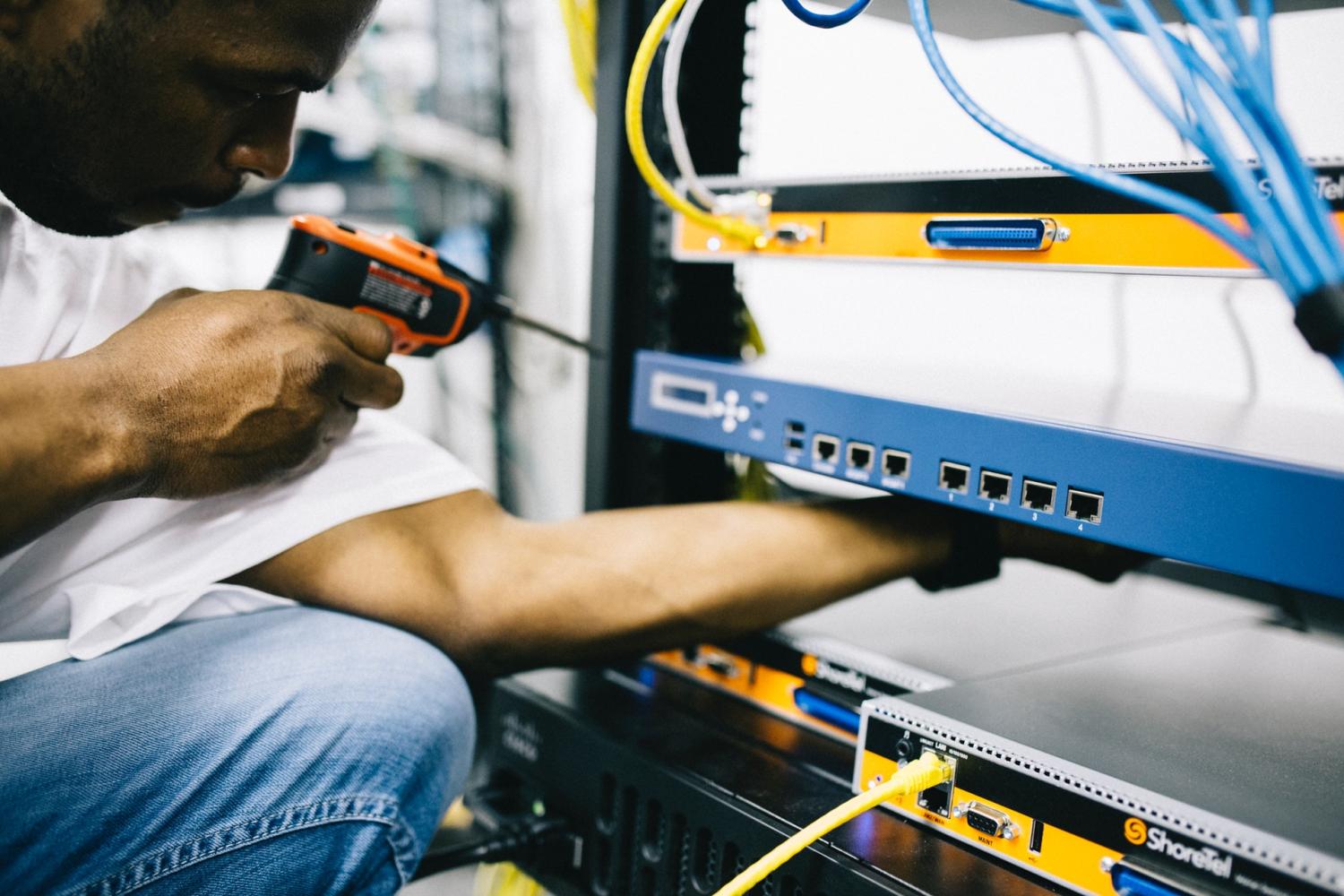
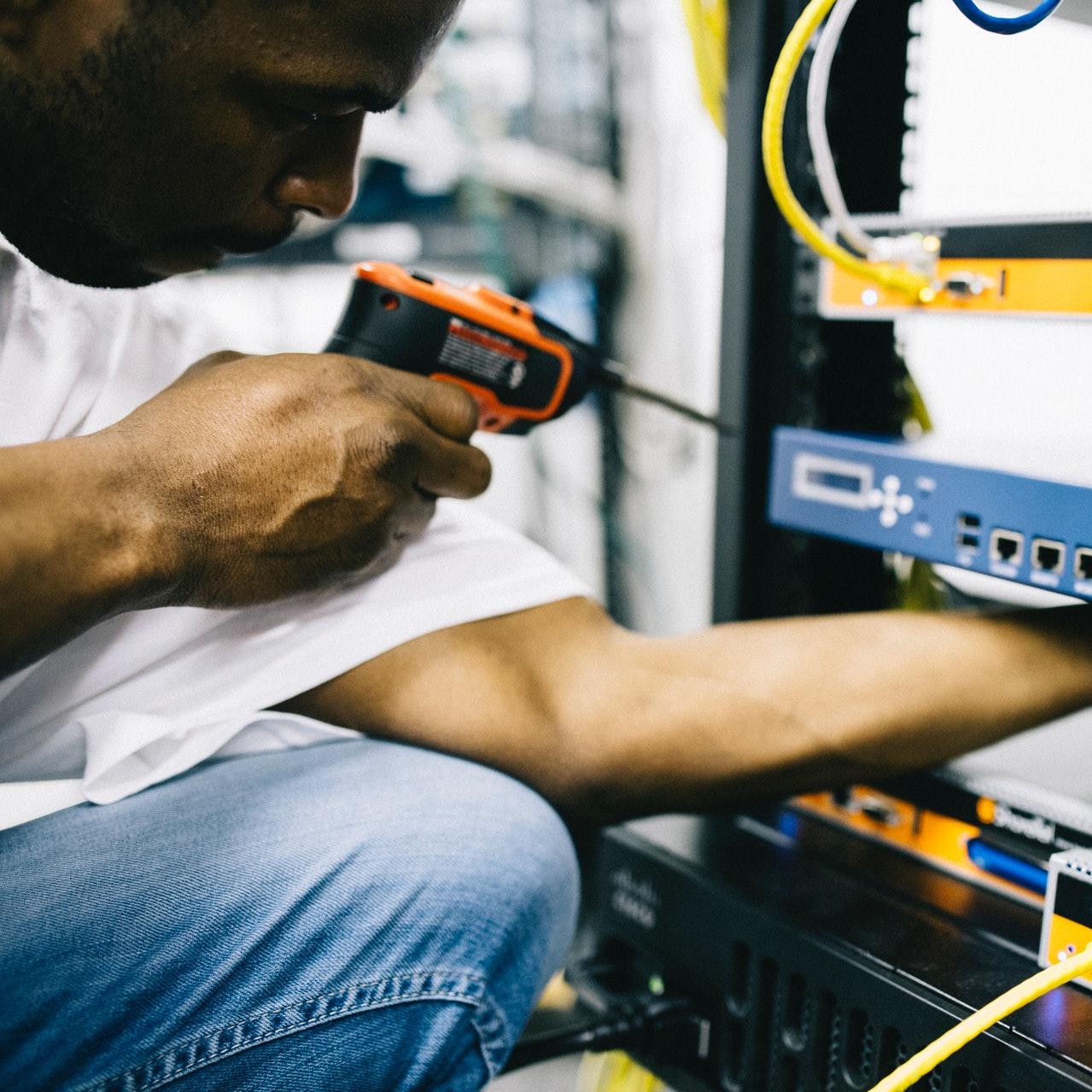
Companies often tout globalization as the necessary means to compete in a hyper-competitive economy, but new research from the Economic Policy Institute (EPI) suggests many people of color — including Black workers — have paid a heavy price during the past few decades.
Even at a time when the debate over federal policies and legislative bills such as Build Back Better have fostered plenty of vitriol but little in the way of long-term, sustainable and fair solutions, the numbers surrounding the decline of U.S. manufacturing alone should spur both business leaders and policymakers to think ahead and consider bolder ideas so that everyone has a fair stake in the 21st-century economy.
Disappearing jobs = Black workers losing good wages
Let’s start with the raw numbers: EPI concluded that between 1998 and 2020, almost 650,000 Black workers within the wider manufacturing sector lost their jobs in the U.S.
That number translates into more than a 30 percent decline in Black manufacturing employment since the late 1990s — and the millions of lost manufacturing jobs have meant the end of higher wages that are not available in sectors such as the retail or foodservice industries. Black workers still employed in manufacturing earn over $5,000 a year more than they would if they were employed within non-manufacturing jobs, with the difference in wages almost 18 percent.
For those who felt resigned to work in the service industry due to the lack of decent paying jobs in manufacturing, the COVID-19 crisis gave many of them a huge jolt.
One outcome of the pandemic and Great Resignation is that more workers have been planning their exit strategies from service jobs, in part because the low wages have clearly not been worth the health risks. Other reasons include irregular work schedules and the specter of unpleasant — if not violent — encounters with customers. Many hurdles for these workers to find greener pastures, however, remain.
Can the tech industry offer a new beginning for service workers?
Programs such as technology bootcamps offer a promising alternative for more workers, as they can learn valuable skills without the huge investments in time and money that are required to complete a college degree. And companies have shown interest in hiring from this pool of newly minted tech workers. In fact, many companies within the service industry, such as Domino’s and Target, are seeking employees for their growing information technology teams as they gravitate toward a digital-first strategy.
Editor's note: Be sure to subscribe to our Brands Taking Stands newsletter, which comes out every Wednesday.
But the technology sector has also been slow on hiring a more diverse workforce — the stubborn reality even after the summer of 2020, a time when many tech companies made bold promises in the wake of George Floyd’s death. Therein lies opportunities for companies who will follow through on considering everyone fairly when it comes to hiring. “While tech firms that have fallen behind on diversity are losing workers, the Great Resignation has created a massive opportunity for all that underutilized, under-compensated talent to flow to companies that truly embrace a diverse workforce, potentially increasing diversity and opportunities across the industry,” Thomas Smith, CEO for the technology company Gado Images, wrote in a recent article for Medium.
Long-term challenges that are short on answers
So, what can offer a lift to Black workers who seek a new career, wish to get out of the service industry, but may not see a tech job as a viable option? At a higher level, EPI insists that more investments in infrastructure, manufacturing capacity and climate change mitigation plans can help generate solid jobs for all U.S. workers; that is, if such programs are paired with smarter and fairer international trade policies. “When implemented with clearly defined racial and gender equity goals, these investments can help raise living standards for men and women workers of color without a college degree,” EPI concluded.
Finally, EPI offers a reminder that the U.S. trade deficit isn’t an abstraction but has real consequences. “Globalization of our economy, driven by unfair trade, failed trade and investment deals, and, most importantly, currency manipulation and systematic overvaluation of the U.S. dollar over the past two decades has resulted in growing trade deficits,” concluded EPI’s researchers, adding that ballooning trade deficits “eliminated more than 5 million U.S. manufacturing jobs and nearly 70,000 factories.”
Judging by what’s going on in Washington, D.C., however, such plans for the long run will not occur any time soon. As independent journalist Judd Legum recently observed, many of the same U.S. companies who tout their work on diversity, equity and fair hiring are also actively involved in scuttling any federal legislation that would level the playing field for all Americans, including Black workers.
Image credit: Field Engineer via Pexels
While Tesla and the White House Tussle Over EVs, Kia Makes Headway on Its All-Electric Lineup


Actually, as of press time the Oval Office has been silent about the insults that Tesla CEO Elon Musk has hurled at the Biden Administration over being excluded from recent White House events focused on all-electric cars. But no matter whose side one is on – and Tesla fans have made their opinions loud and clear to the point that Change.org is now involved – the Korea-based automaker Kia has put its stake in the ground when it comes to how it could influence the future of electric vehicles (EVs).
Last week, Kia America announced its pricing for its 2022 EV6, the automaker’s first all-electric model. For the most basic option with a range of 232 miles, the price after the $7,500 federal EV tax credit is $33,400. If drivers prefer a more powerful battery pack (77.4 kWh vs 58 kWh), that model starts at $39,000. The costlier trim options, which include an all-wheel drive version, top off at $55,900 before any tax credits settle in.
While just about every automobile reviewer shared their quibbles with the EV6, the overall feedback so far has been positive, and even gushing. “The Kia EV6 represents a bold pivot for Kia to electric vehicles,” wrote Bradley Berman for Autoweek. “Moreover, the EV6 demonstrates that the brand can deliver a highly competitive, stylish, long-range, fast-charging battery-powered vehicle in the most popular crossover segment.”
“Kia's EV6 is the new benchmark for affordable electric cars,” echoed Engadget.
“Priced to compete with Hyundai, tuned to compete with Tesla,” concluded John O’Dell for Forbes.
Other reviewed concluded the EV6 “goes straight to the head of the pack” and “simply the best,” checking off boxes, and in a good way, that included the car’s performance on the road, its various interior bells and whistles as well as applauding the time that the EV6 takes to reach a full charge.
The EV6 is one outcome of Kia’s “Plan S” strategy, the most recent version of which the automaker announced in early 2020. That plan included targets to roll out 11 models of EVs by 2025, sell 500,000 of them by mid-decade and at the same time, achieve a 6.6 percent market share in three short years.
The pandemic and rapid changes in the electric car space could have an impact on Kia reaching those goals. Nevertheless, Kia appears to be optimistic about its own long-term prospects. Part of the company’s bullishness shows in its announcement that the EV6 will be showcased in a Super Bowl LVI spot two Sundays from now. Incidentally, Kia isn’t ceding any ground to its competitors on the corporate responsibility front, and that includes Subaru: Part of the brand’s Super Bowl campaign will include an announcement that it will partner with the pet adoption nonprofit Petfinder Foundation.
So while Detroit’s legacy automakers insist they are doing everything they can to give Tesla a run for its money when it comes to leading on EVs, and Tesla’s supporters clap back in kind, Kia has made it known that it is very much a player in this decade’s electric car race.
Image credit: Kia media relations
Please, Please Pick Up Your Pizza, Says Domino’s
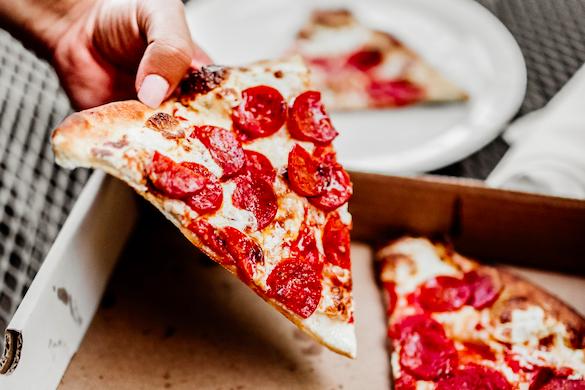
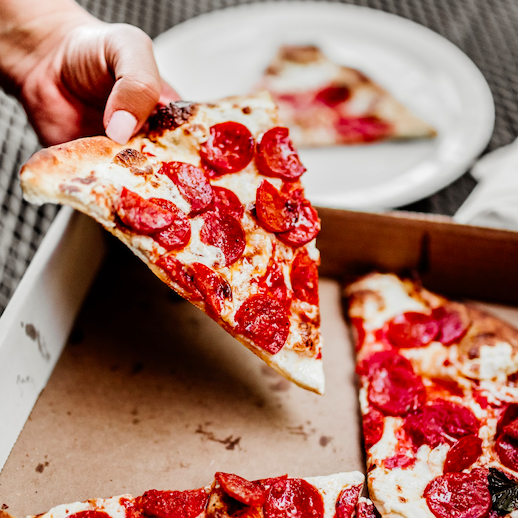
Is it a labor shortage, or is the reality that workers are just tired of schlepping for low wages that often come with high levels of grief, not to mention the risk of exposure to the Omicron variant? Either way, the dearth of people who are willing to work within more difficult and unrewarding jobs is affecting sectors from recycling to, of course, restaurants and your local coffee shops. Some companies have responded with higher hourly pay and benefits, such as one D.C.-based pizza chain. While we’re trying to slice up the reasons, hear out Domino’s, which has come up with its own solution: If you’d like a pizza, the company says it will pay for you to come and pick it up yourself.
Actually, what Domino’s is proposing to its customers is a tad more nuanced. The company is turning the food delivery model on its head, as in offering to “tip” anyone craving one of its pizzas $3. For a 14-inch pepperoni or tossed Pacific vegetable pizza, that’s about a 15 percent savings on your next pizza hankering.
Here’s how this program, just announced today, will work. Customers who order a pizza from Domino’s online, such as through its app, and agree to fetch the order using their own wheels can score a $3 credit off their next order. The minimum order is $5 (before tax and er, gratuity), and as of press time Domino’s will go forward with this plan until May 22.
We can’t confirm if the following quote is a jab at politicians such as New York City Major Eric Adams, who recently caught flack for describing such jobs as food and delivery workers as “unskilled,” but here’s how Art D'Elia, Domino's executive president and chief marketing officer, summed up this deal:
"It takes skill to get pizza from a Domino's store to your door. As a reward, Domino's is giving a $3 tip to online carryout customers who take the time and energy out of their day to act as their own delivery drivers. After all, we think they deserve it."
Clearly, the move could help alleviate any stress on Domino’s outlets, which along with the wider food service sector are having their own challenges retaining workers. In fact, 3p checked its local Domino’s franchises, and at some locations carry-out was the only option available. Nevertheless, could this shift help the company attract and retain customers, who during an age of countless delivery services will gravitate to the restaurant chain offering the best deal? According to Jordan Valinsky of CNN Business, such companies really do not have a choice, and one of the biggest annual sporting events here in the U.S. offers a grim reminder.
“The promotion could help alleviate stress on its limited number of workers right before the Super Bowl, which is one of the company's biggest pizza sales days,” wrote Valinsky, adding that “the labor shortage has plagued Corporate America -- particularly companies that pay low wages. The percentage of Americans who are in the job market, either as workers or as active job seekers, is measured by the labor force participation rate.”
The labor force participation rate is still relatively low compared to its level before the COVID-19 pandemic hit. In December 2021, the measure was just below 62 percent, and although it has clawed back about half of what was lost during the peak of the pandemic, it is still off when compared to the February 2020 rate, which was 63.3 percent (for big-picture context, the rate was almost two-thirds, or more than 66 percent, in 2007).
That single-digit percentage difference may not appear to be much of a gap, but that margin translates into millions of service sector job that are unfilled – leading to consternation amongst managers and consumers alike while workers figure they can hold out until they can nab the best possible job offer.
Image credit: Jordan Nix via Unsplash
Why Labor Shortages Could Stall Any Recycling Progress
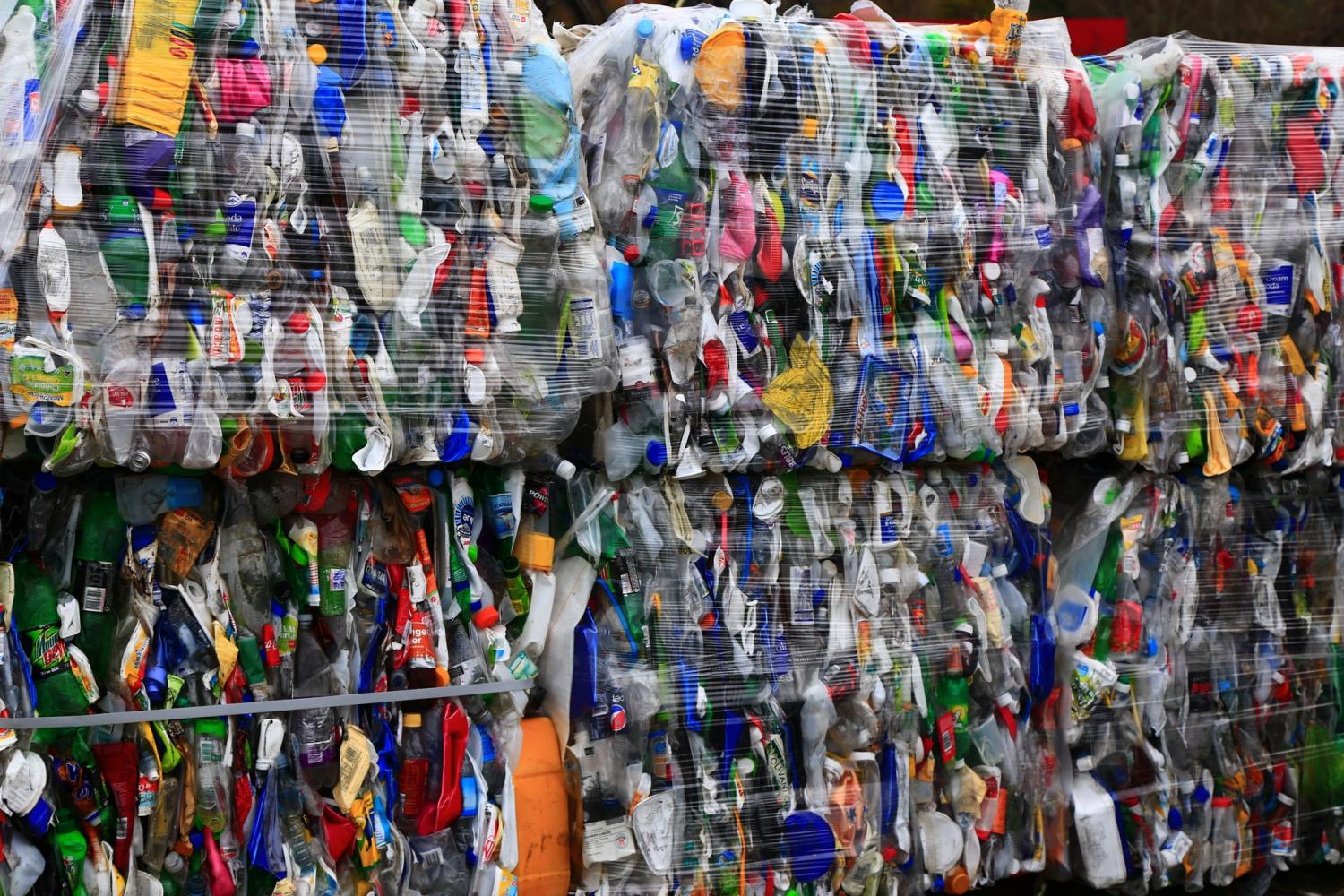
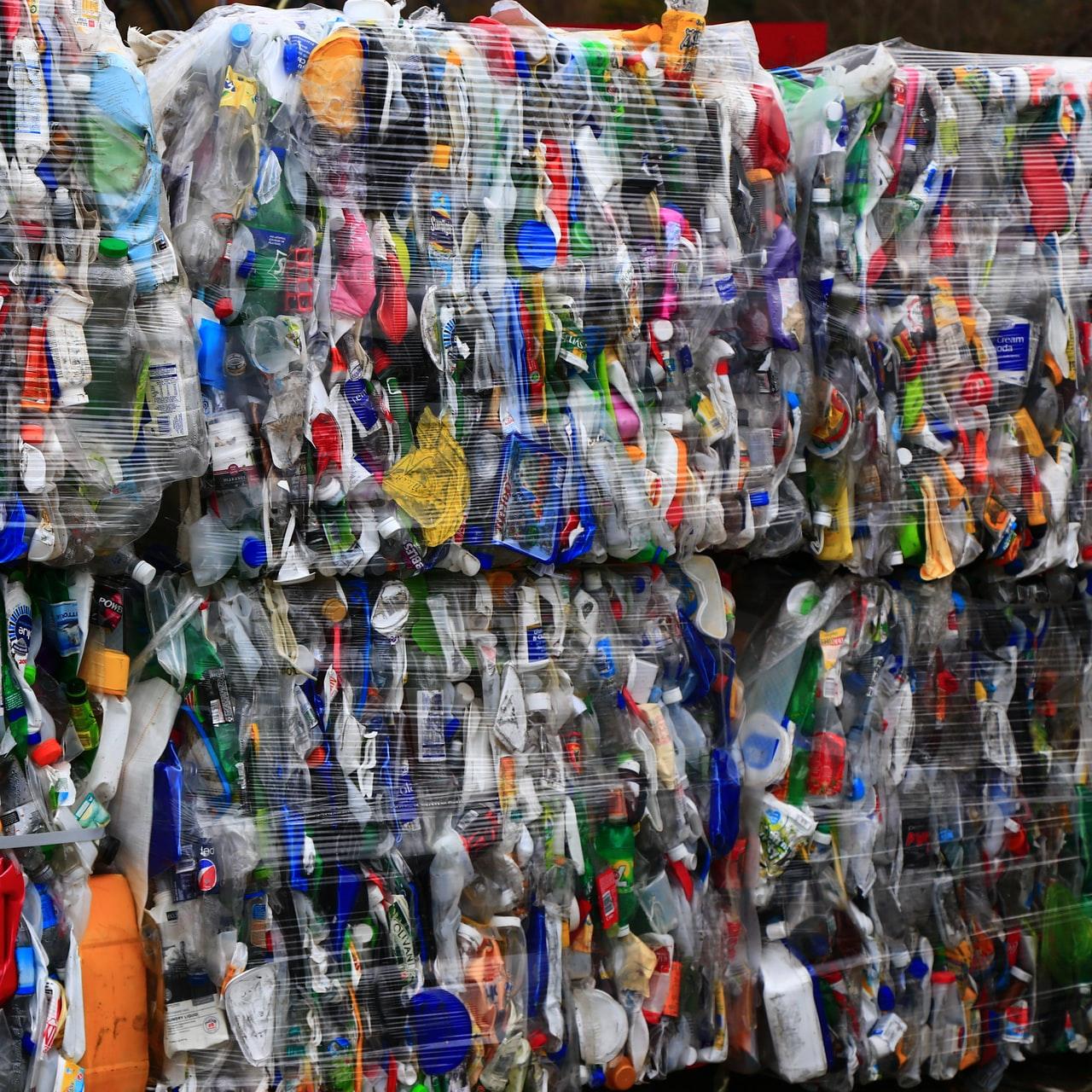
Efforts to manage the global plastic waste crisis have been intensifying, partly with an assist from leading producers and users of plastic packaging. The active participation of those with a financial stake in the mess is a welcome development. However, much of the focus is on recycling, and that could become a problem. The ongoing labor shortage in the U.S. is yet another indication that reducing the sheer volume of plastic in the waste stream should be the main imperative, whether it is recycled or not.
Assessing global action on recycling plastic waste
U.S corporations have begun to take action through the U.S. Plastics Pact, which launched in August 2020 to support the global Plastics Pact Network project of the Ellen MacArthur Foundation.
Along with the U.S., the current member nations of the network are the U.K., France, Chile, the Netherlands, South Africa, Portugal, Poland and Canada along with the regional European Plastics Pact and the Australia, New Zealand and Pacific Islands (ANZPAC) Plastics Pact.
That leaves some gaping holes in terms of global action, but this network can still make a significant difference. Stakeholders in the member nations and regions have committed themselves to taking five action steps. Two of the five steps are aimed at reducing the amount of plastic in the waste stream. One involves redesigning and innovating to exclude “unnecessary and problematic” plastic materials from packaging. The other focuses on moving away from single-use items.
However, the Plastic Pact model still allows plenty of wiggle room for plastic in the waste stream. The other three commitments involve improvements in recycling systems, and increasing the use of recycled content in plastic packaging.
Unless members make significant progress on their plastic-reducing commitments, there is a clear possibility that more plastics will continue to enter the global recycling stream, which has already proved to be overburdened, ineffective and inefficient.
U.S. tackles the “problematic and unnecessary” problem
To their credit, members of the U.S. Plastics Pact are making a serious attempt to put the plastic genie back in the bottle.
Last week, the U.S. Plastics Pact fulfilled one part of its commitment to the Plastics Pact Network, when it published its first Problematic and Unnecessary Materials List. The list details 11 items that are not currently reusable, recyclable, or compostable at scale in the U.S.
The list is significant because it represents the work of leading stakeholders in the plastic packaging field. The list was produced as a collaborative project by more than 100 U.S. Plastic Pact members, including consumer packaged goods, retail, and plastic materials conversion companies. As a group, the participating businesses produce 33 percent of plastics by volume that are included in the U.S. Plastic Pact scope.
“… primary, secondary, and tertiary packaging with both consumer and commercial applications will be considered in scope,” the U.S. Plastic Pact explains. “This recognizes that all of these packaging types have consequential environmental impacts and that each are feasibly subject to substantive and necessary action under the four U.S. Pact targets.”
The list of 11 items is an ambitious one. It includes unneeded single use cutlery, stirrers and straws as well as polystyrene and other specific materials. Several types of pigments and other additives are also on the list, and labeling is a particular area of focus.
Are brands stepping up and taking responsibility?
Coca-Cola, Clorox, Walmart and other corporate U.S. Plastic Pact members have taken on some risk by outing themselves as leading contributors to the plastic waste stream. However, many of these companies have already taken steps to reduce plastic packaging. The Plastic Pact provides them with an additional platform to craft a more positive brand reputation.
Developing the list of 11 forbidden items is just the first step. Plastic Pact members have also committed themselves to take up the role of “Activators.” They are tasked with developing guidelines for sustainable alternatives, with the goal of eliminating the items on the list by 2025.
A similar effort is under way through the Consumer Goods Forum (CGF), which counts 400 CEOs and other executives on its member rolls.
Last July, the CFG Coalition of Action on Plastic Waste completed its “Golden Design Rules” for reforming the use of plastic. The project, which was inspired by the Ellen MacArthur Foundation, began in 2020 under the sponsorship of CEOs from Loblaw and Unilever, with Mars and Walmart as co-chairs.
“Coalition members are committing to individual rules after identifying and prioritizing opportunities in their own packaging portfolios where they can make targeted and valuable impact,” CFG explains.
The new rules have the potential to make a significant impact in the coming years. The total revenue for CFG members adds up to 1 trillion euros, accounting for more than 10 percent of the global plastic packaging market.
However, as with the Plastic Pact approach, the Golden Design Rules promote the use of “less and better” plastic, while allowing ample room for more plastic through recycling.
Without significant progress on the “less” side, the end result could be no significant decrease in the amount of plastic circulating the globe, while the burden of recycling continues to fall on local communities.
Recycling solves some problems, creates others
Plastic recycling has always been a problematic solution. Although recycling helps conserve virgin resources, such programs involve a web of costs and environmental impacts. That includes the transportation and processing of recycled items, in addition to rendering them into new plastics.
Recycling programs can provide a revenue stream for local governments, but they can also expose local budgets to risk in the global commodities market, as China and other nations clamp down on imported waste.
In addition, local post-consumer plastic recycling programs are notoriously difficult to administer and enforce efficiently. A ramping-up of enforcement efforts can be costly, and it can easily foster resentment.
Considering the hostile environment raised by enforcing standard public health measures in a pandemic, this is a dangerous time to stir the civic pot with tickets and summonses for putting an empty bottle in the wrong bin.
Recycling and the labor shortage
The pandemic has also highlighted a labor shortage issue that has been brewing in the waste management sector for several years.
A recent article in Waste Today suggests that pandemic-related labor shortages are a near term spike in a longer trend. As described by reporter Alex Kamczyc, part of the ongoing problem is the “Amazon effect,” as online shopping and delivery services pull drivers and other workers away from the waste hauling and recycling sector.
The rise in the gig economy, along with new remote employment opportunities, may also be drawing away potential workers from hands-on jobs with inflexible schedules.
Solutions to the recycling labor shortage
Some recycling companies spotted the labor shortage problem long before the pandemic hit, having noted an aging trend in the demographics of a mostly male workforce. The U.S. company Republic Services provides one example of a creative response the problem. Several years ago, the company embarked on a successful campaign to recruit women drivers by reaching out directly to potential applicants and taking steps to ensure a welcoming environment within the company.
Diversity hiring is one solution. Kamczyc also cites the firm Waste Management for adopting new technologies to optimize route planning and improve processing efficiency.
Increasing pay and benefits is another pathway, but those additional costs will be passed along to consumers. Kamczyc draws a concerning picture in which entire districts have curtailed or shut down recycling programs due to labor shortages, in an effort to keep costs down.
Business leaders have made a good start on tackling the plastic pollution problem. However, if a major part of the plan is to increase recycling rates, they need to consider the workforce, focus more attention on the human factor, and develop long term solutions that keep plastic out of the waste stream entirely.
Image credit: Nareeta Martin via Unsplash
We May Soon Be Flying the Friendly, Not-As-White Skies


Last week, United Airlines took a big step to make its flight crew look like the America of the 2020s. The airline is opening the doors of opportunity to more citizens, so the result could be that flying commercial may look very different in the next few years – especially as you disembark from the plane at the jetway and take a peek at who are working in the cockpit.
Depending on the source cited, about 90 percent of all U.S.-based pilots are overwhelmingly white and male. We could go down a Dreamliner-sized rabbit hole on why the composite sketch of a commercial pilot is a white male in his 40s; though one assumption that we cannot make is the demographic breakdown of U.S. military pilots. Yes, the percentage of such pilots who are white males within the armed services remains lies at a similar ratio, but the reality is that the military is funneling fewer pilots as private aviation schools are training more of them.
Bottom line, the challenge is one of access.
The costs of training to become a commercial pilot are among the barriers that many people face as they consider a career in the skies, but United insists that it is striving to eliminate that hurdle. The airline, which says it is the only major airline to own its own flight training school, has opened the United Aviate Academy. Of the inaugural class that started last week, 80 percent of these budding pilots are either women or people of color. The new academy is part of United’s goal to hire at least 10,000 new pilots by the end of this decade, with the airline’s plan to have half of them matriculating through its flight academy. United will need the staff, as the company plans to acquire 500 new aircraft to meet what the wider industry expects to be a renewed surge in air travel if and when the world can get past this pandemic.
JPMorgan Chase is lending funds to this effort, with the financial giant funding about $2.5 million in scholarships for aspiring pilots attending United’s new flight academy. Meanwhile, the airline says it has its own plan in place to build a more diverse flight crew, one that will rely on more targeted recruiting, partnerships and financial aid programs.
"Our pilots are the best in the industry and have set a high standard of excellence," said United’s CEO Scott Kirby in a recent public statement. "Recruiting and training even more people who have that same level of talent, motivation and skill is the right thing to do and will make us an even better airline. I couldn't be prouder of this first group of students and look forward to meeting the thousands of talented individuals who will pass through these doors in the years to come."
Don’t be surprised if other airlines here in the U.S., as well as those abroad, take on a kindred strategy. One consulting firm has estimated that the world could see a shortage 34,000 commercial pilots by 2025 – and that number could soar as high as 50,000 depending on how the air travel industry recovers during the next several years.
Image credit: Chris Leipelt via Unsplash
More Than Ever, Consumers Will Be Looking for Meaning in 2022


In today’s chaotic world, shoppers aren’t just looking for products. They’re searching for something deeper and more meaningful: an experience, an expression of belonging, an articulation of their place in the world. That’s a lot to ask of a retail transaction — but brands that rise to this challenge, and use it to deepen and redefine their relationships with their customers, have an opportunity to win lasting loyalty in 2022.
Here are five key ways this trend is playing out:
In retail and beyond, sustainability has gone mainstream
Sustainability used to be a niche interest: important to young trend-setters, but largely ignored by mainstream consumers. Not any more: according to IDC, almost seven out of 10 shoppers say a brand’s sustainability practices shape their purchasing decisions. And those are the numbers for all ages: they climb even higher when you zoom in on younger demographics.
For brands, that means that it’s no longer enough to nod to sustainability in corporate statements: you need to embed environmentally friendly policies into everything from supply chains and distribution networks to your products themselves — and you also need to find ways to communicate your products’ benefits in an authentic and credible way. Transparency is now a must-have.
Vintage is in vogue
One sign of the sustainability boom: the “reuse economy” is surging, with Americans spending over $69 billion on previously owned items during the past holiday season — a 24 percent increase on the previous year’s number — and more than three quarters of adults buying at least one secondhand item over the holidays.
While saving money is the main factor driving secondhand shopping, consumers say they’re also eager to find eco-friendly products, meaningful gifts, and more personal experiences that don’t involve shopping at big box stores. Companies such as Patagonia and REI now sell used products alongside new items; other retail brands can also tap into the trend by offering buy-back programs, or easy recycling or resale options for used products.
Offer experiences, not gimmicks
When it comes to gift-giving, physical products remain popular, but one in six shoppers also like to give their loved ones experiences. Such gifts — running the gamut from spa passes and theater tickets to DIY projects such as book-binding sets and even knife-making kits — offer the promise of being more memorable and “real” than conventional gifts and can help to bring people together.
Still, buying experiences raises the stakes for shoppers: you can’t return or exchange an experience that doesn’t work out. That means shoppers will want to know exactly what they’re getting before they pull the plug on an experiential purchase — and they’ll be more likely to reward brands that can use rich media and immersive shopping experiences to help them appreciate what they’re buying.
Planet-first packaging
The e-commerce boom has left everyone drowning in cardboard boxes — a trend that’s good for cats, but bad for the planet. Moving into 2022, brands have an opportunity to differentiate themselves by offering more thoughtful and sustainable packaging and shipment options.
We’ve already seen some companies, such as Amazon, allow customers to group deliveries into single shipments to reduce waste and transportation emissions, and that’s a good start. Brands in the retail sector can also consider offering sustainable alternatives to conventional packaging and gift-wrapping — perhaps recycled shipping boxes, or biodegradable tissue paper instead of foil-lined wrapping paper — to win over consumers.
Information, not greenwashing
Your sustainability efforts won’t count for much if you can’t communicate them effectively — and the pandemic has only made consumers warier of the conflicting information that’s floating around. To promote your brand as planet-conscious, it isn’t enough to simply say that: you’ll need to use data and clear evidence to communicate the work you’re doing.
Crucially, consumers are now much savvier about brands’ sustainability messaging: you won’t be able to project planet-friendliness unless you bring the receipts, and prove you’re actually making a difference. The rise of startups offering climate-focused software and carbon accounting tools speaks to this trend: increasingly, successful brands will use hard data — such as carbon footprint or food-miles metrics — to document and validate their sustainability gains, and find compelling, credible ways to communicate their achievements to customers.
Put your faith in product experience
These trends present both challenges and opportunities for brands. Creating meaning isn’t easy, especially when so many consumers are feeling exhausted and even a bit jaded. The key will be for brands to show, not tell. You can’t simply use marketing messages to make customers feel something; you need to use your products to create experiences that hold real value for customers.
Fortunately, customers are actively seeking those kinds of product experiences. According to a recent Akeneo survey, half of shoppers now actively check product information for details about sustainability practices, and large numbers also look for responsible sourcing and social commitment information. People want to contextualize and deepen their product experiences, and they want brands to help with that process.
By using product information in smart, consistent ways, it’s possible to stand out even in today’s crowded marketplace. Customers are asking brands to give them more — so answer their call, and commit to finding ways to offer more meaningful, sustainable, and powerful retail experiences in 2022.
Interested in having your voice heard on 3p? Contact us at [email protected] and pitch your story idea to us.
Image credit: Blake Wisz via Unsplash
Neil Young, Brands, and the Backlash Over COVID-19 and Climate Disinformation
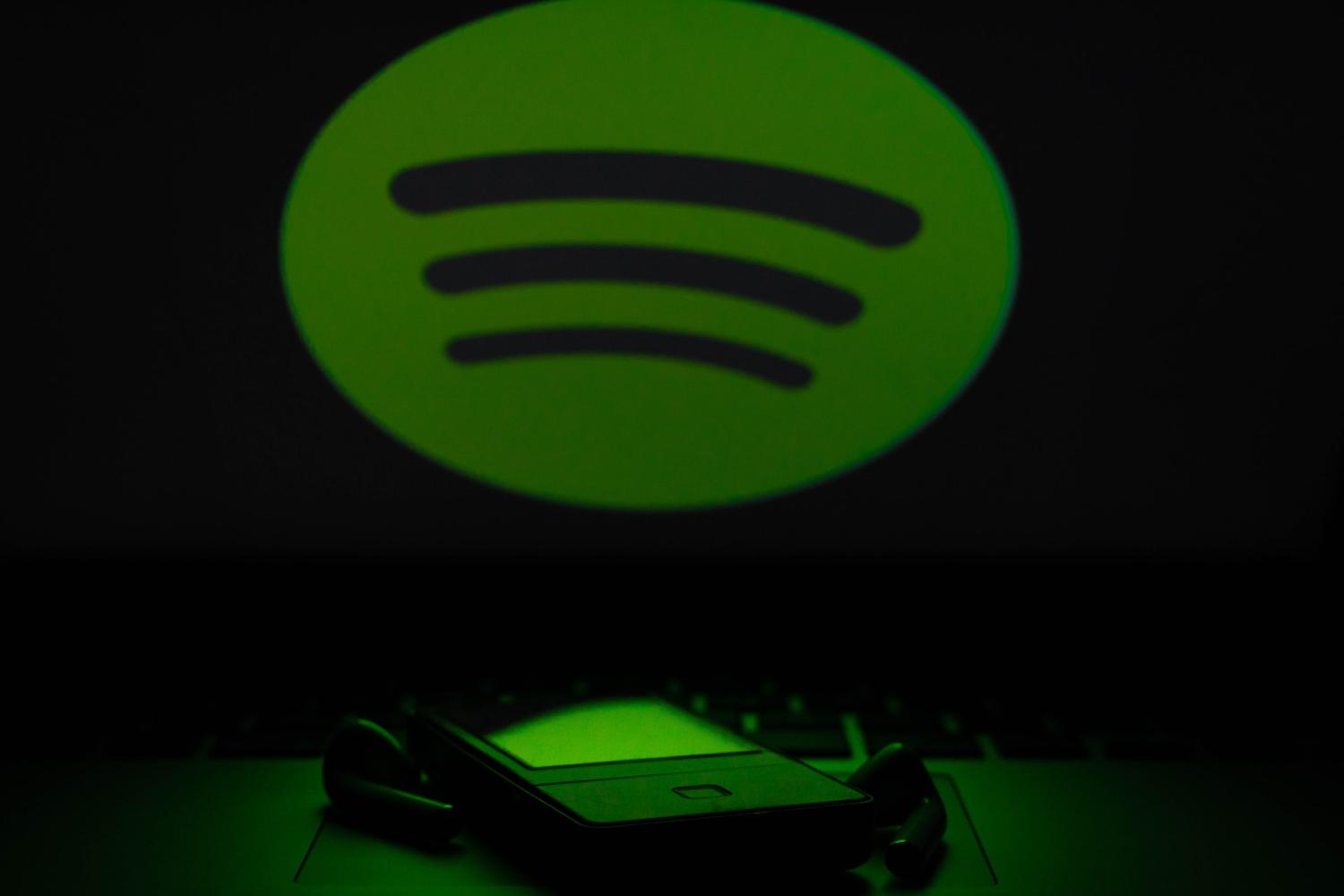
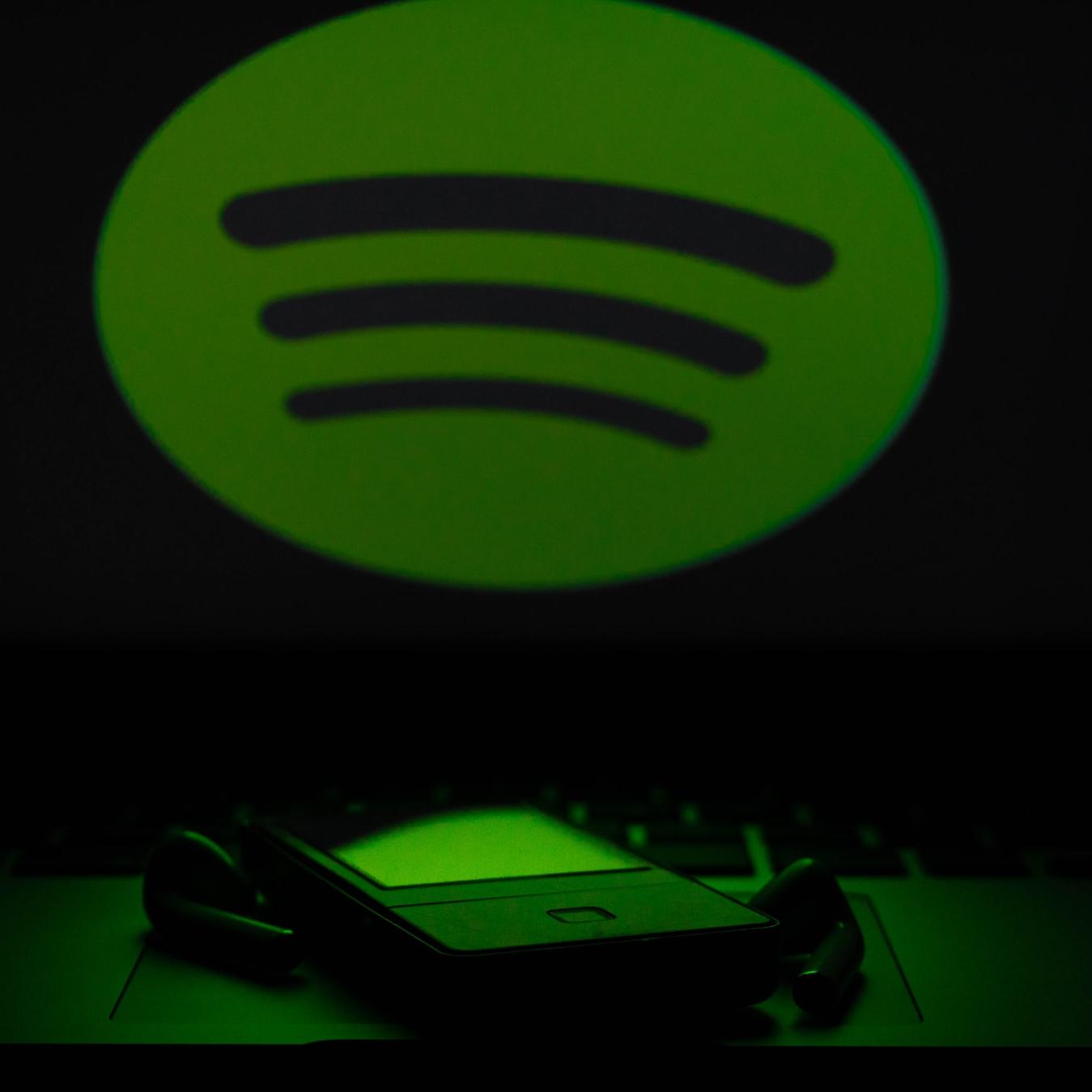
The music streaming service Spotify has attracted its share of criticism since its launch in 2008, mainly from artists charging that the company's payment rate is unfair. Now, the growing popularity of podcasts is bringing new controversy to the company. Spotify has provided Joe Rogan with a platform for what critics say is amplifying right-wing disinformation about COVID-19 and climate change as well, and now musicians, starting with Neil Young, are making their voices heard.
Spotify: money talks
Young brought the Joe Rogan issue to a head earlier this week. As described in multiple reports, Young posted an open letter on his official website explaining why he does not want his music the same online platform with Rogan’s vaccine misinformation. The letter was soon deleted, but Spotify took the hint. However, rather than removing Rogan’s podcast, the company removed Young’s music.
The emerging consensus among entertainment reporters is that Spotify’s decision to favor Rogan over Young was a foregone conclusion. The Swedish company paid Rogan $100 million for exclusive rights to his “Joe Rogan Experience” podcast back in 2020, and the multi-year deal is apparently working out very well for Spotify's bottom line. Rogan’s audience of an estimated 11 million listeners per podcast translates into big advertising dollars for Spotify.
Climate misinformation is also a problem
Rogan also lit another fire on Monday when he hosted the clinical psychologist Jordan Peterson, who peppered his appearance with specious claims about fundamental flaw in the models used by climate scientists.
“In waffling remarks, Peterson said that ‘there's no such thing as climate, right?’” as CNN reported on Thursday. “He then went on to mock ‘climate types,’ who he said typically suggest that climate is about everything.’”
The well-known climate scientist Michael E. Mann was among the many experts who took to social media to explain the science.
“Mann said that Peterson's claims were ‘nonsensical and false,’ and seems to boil down to the idea that climate science is so complicated that scientists could never model it or understand it,” CNN reported.
Another brand reputation on the line
The twin flare-ups have stirred conjecture that other influential musicians on Spotify may follow Young’s lead. After all, some of the top artists in the world, including Paul McCartney and Dolly Parton, have publicly supported COVID-19 vaccines. In particular, Parton donated $1 million in support of research which helped lead to the development of the Moderna vaccine. Others have participated in public service advertisements supporting vaccination.
Against this backdrop, the Joe Rogan Experience sticks out like a sore thumb.
Editor's note: Be sure to subscribe to our Brands Taking Stands newsletter, which comes out every Wednesday.
Earlier this week Salon’s investigative reporter Kathryn Joyce argued that Rogan is responsible for popularizing the anti-vaccination views of Dr. Robert Malone, promoting him into an influential “right-wing media star.”
“…Malone is probably best known as the ‘mass formation’ guy who got kicked off Twitter and promptly went viral on Joe Rogan's podcast — which, with an estimated 11 million viewers per episode, has a larger audience than most news outlets,” Joyce wrote. She also observed that exposure on the Joe Rogan Experience is the common denominator leading to a growing merger between violent right-wing extremists and the anti-vaccination movement.
“That also helps explain why, amid all the other reasons the big anti-vax rally made headlines this week — its cynical invocation of Martin Luther King Jr.'s March on Washington; Kennedy's strategically inflammatory suggestion that unvaccinated Americans have it worse than Anne Frank during the Holocaust; how it drew Proud Boys and Groypers together with anti-vaxxers in what's quickly becoming a unified, far-right machine — Defeat the Mandates is a media story too,” Joyce added.
Malone is not the only example. Rogan has also provided a sort of Twitter ban “insurance” for the extreme right wing member of Congress Marjorie Taylor Green over COVID-19 disinformation. In effect, he is turning Spotify into a refuge for anti-vaccination extremists suspended or banned from other online platforms.
Inspired by Neil Young, Spotify users take action, and competitors pile on
As of this writing, there has been no discernible movement towards a widespread artist boycott of Spotify, at least not yet.
The platform’s users, though, are a different story. The influence that Neil Young has on popular culture extends well beyond his music, and his powerful advocacy for vaccination appears to have struck a nerve among Spotify users.
Spotify users were already primed for a boycott last fall, when news broke that CEO Daniel Ek invested 100 million euros ($111 million) in the military technology company Helsing.
The flare-up over Neil Young has pushed many of Spotify's users to take action.
“Many Spotify users are angry and jumping ship to competitors for their music streaming. The hashtag #BoycottSpotify is trending on Twitter, where several artists have promoted the cancellation of their accounts,” recounted Digital Music News reporter Ashley King.
That dustup does not appear to have had a lasting impact on Spotify, but the Neil Young letter has already sparked an intense round of blowback from users, and this one may be far more damaging.
By Tuesday, one Spotify competitor, Apple Music was already taking jabs at Spotify on Twitter and drawing attention to its own Neil Young catalogue. On Thursday, Rolling Stone reporter Ethan Millman noted that “Apple Music’s pinned tweet declares the platform ‘The home of Neil Young,’ while the app features a dedicated a tab on its browse page to Young titled, ‘We Love Neil.’”
Millman also caught wind of a potential movement among other musicians in support of Neil Young. He cited Peter Frampton, who wrote “Good for you Neil. I’ve always been an Apple guy for streaming. No Joe Rogan for me thank you!” on Twitter.
Meanwhile, the #boycottspotify hashtag has blown up on Twitter. As with Frampton, many of the tweets recommend an alternative platform, such as this representative sample by user “Teak:”
“Just deleted Spotify from my phone. I'll use Amazon music or Pandora for now on. I don't even like Neil Young's music and I totally support him. Spotify is helping get people killed with spreading misinformation, an easy decision. #cancelspotify #DeleteSpotify #BoycottSpotify.”
Billboard also reports that Sirius XM revived its Neil Young channel for a limited-run series that began on January 27.
Other entertainment media platforms are also making hay out of the Spotify boycott, by offering users detailed guidance on how they can go about deleting their account.
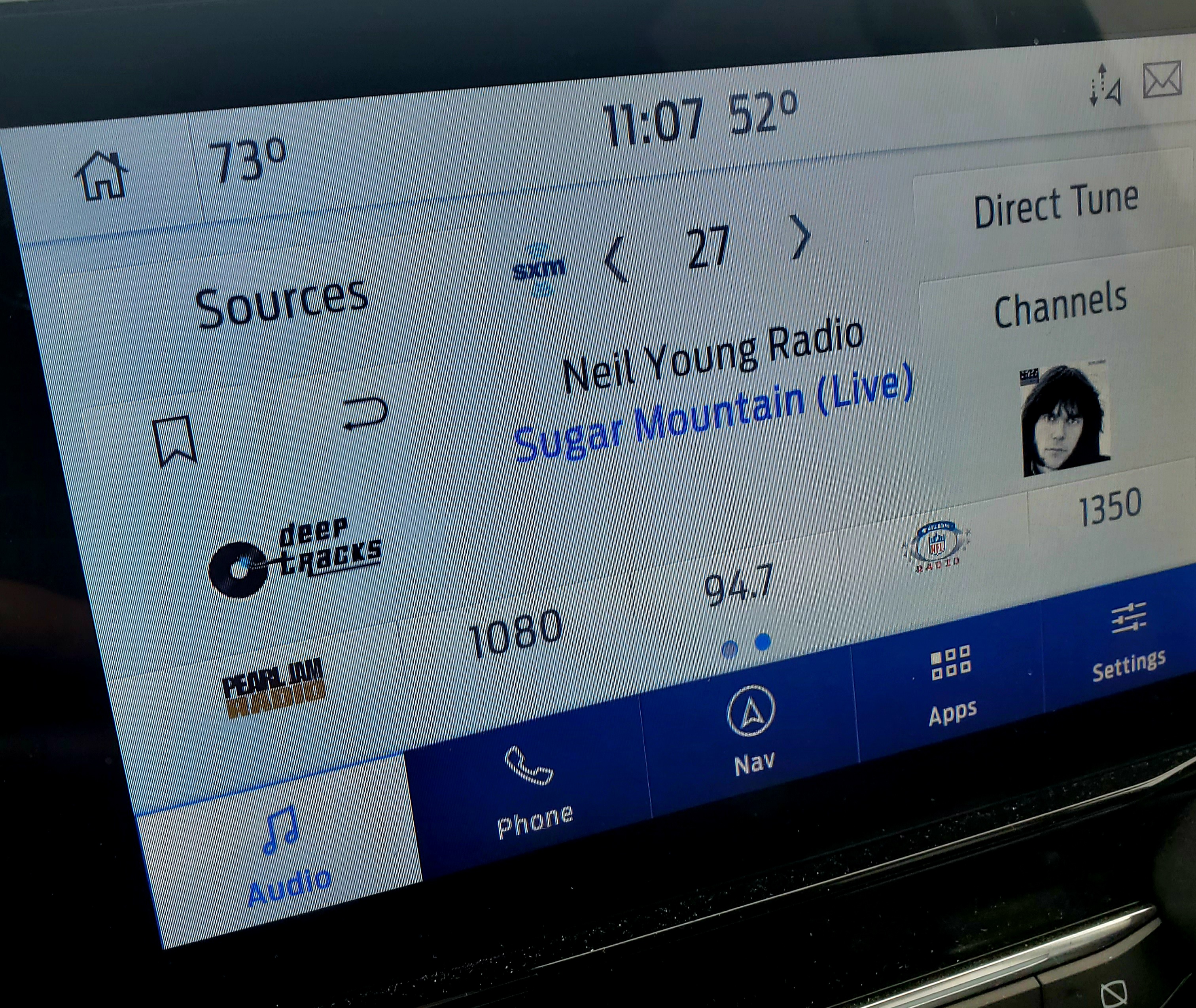
When boycotts work
Consumer-driven boycotts are notoriously difficult to sustain successfully. Starbucks is just one example of a leading company that has survived one consumer boycott after another through the years.
Business-to-business boycotts are a different matter altogether. Over the years, boycott organizers have learned that pressuring advertisers can be an effective course of action to change behavior on YouTube and other leading news and social media platforms. Leading brands have also learned to flee from bad behavior before a boycott even coalesces.
On the heels of the Neil Young letter, outrage over Spotify’s support for the Joe Rogan Experience is beginning to seep into the area of brand reputation. A list of the show’s sponsors is readily available online, and while most of the names belong to little-known consumer products, high profile online platforms including DoorDash, LegalZoom and Zoom Video Conferencing are also on the list. It is only a matter of time before boycotters begin turning up the heat.
Consumer boycotts are most likely to work when brand reputation is already in decline. By supporting Joe Rogan over Neil Young, Spotify may be on firm bottom-line ground for the present, but it has also set itself up for future risk.
Image credit: Reet Talreja via Unsplash
Three Outdoor Apparel Brands Redefining the Supply Chain
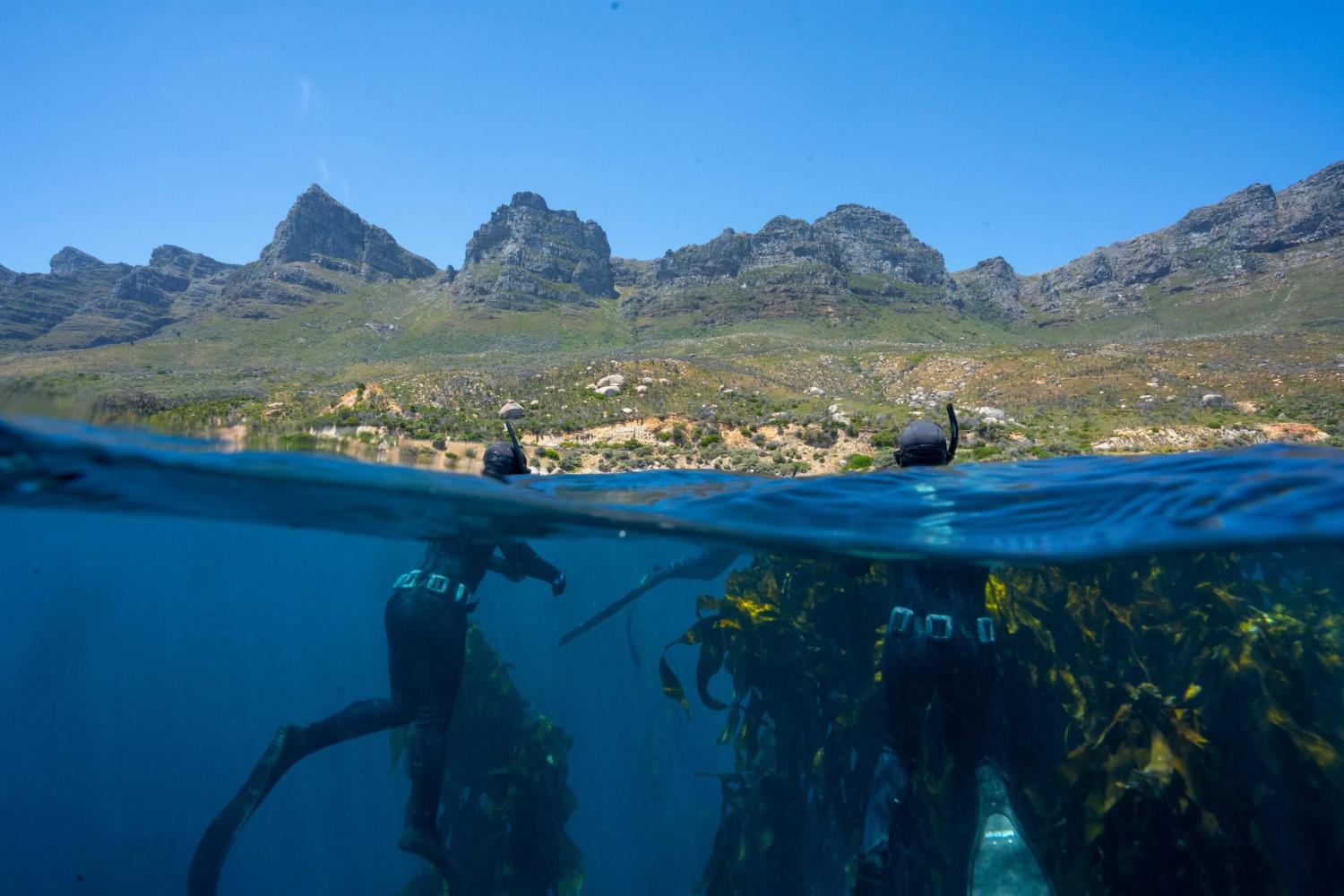

Expectations for a more sustainable supply chain within the apparel sector keep growing. Designers and their peers working within clothing and retail brands are rapidly changing their products’ materials to meet ever-evolving customer requirements.
Whilst organic (or responsibly sourced) cotton and recycled polyester are among the go-to materials for sustainable apparel right now, some companies are pushing the envelope even further. Such efforts include manufacturing materials from sources like lotus leaves and oyster shells. On that point, these three outdoor brands are testing the boundaries of what can be made “wearable.”
Patagonia, rethinking the rubber supply chain
Patagonia has long been known for its forward-thinking approach toward sustainability. The pioneering company was the first to eliminate neoprene from its production line due to its negative impacts on the environment. Neoprene is not only non-biodegradable, but critics have linked the material to chemical odors and even illnesses. Patagonia transitioned away from this source of synthetic rubber and in 2016, it switched to using a natural material, Yulex.
This natural rubber, which comes from Hevea trees, is frequently sourced from South America. It can absorb carbon from the atmosphere, reducing CO2 emissions by up to 80 percent during the manufacturing process.
Producers of this material, however, have to mindful of how they cultivate rubber from Hevea trees, as the result can be more harmful environmental consequences across the supply chain. In the past, companies having Hevea trees within their supply chains have been linked to deforestation as they strived to meet increasing demand for rubber. Nevertheless, Patagonia assures its customers that they are not contributing towards deforestation, as the brand has partnered with the Forest Stewardship Council (FSC) to ensure that these trees are doing their part to ensure biodiversity.
Finisterre: moving away from fluorocarbons and nylon
Alongside Patagonia, Finisterre is another company that says it is incorporating sustainability within all aspects of its supply chain. The brand, which launched in 2003, designs outerwear and wetsuits (as shown above) for British surfers battling the cold. Finisterre has focused some of its attention on eliminating materials that have the potential to harm the environment.
For example, Finisterre’s most recent work has been eradicating fluorocarbons from its fabrics. Waterproof jackets that have fluorocarbons within their base materials are durable and water repellent. However, these fluorocarbons will slowly be released from such jackets, making their way into water systems.
Since 2018, Finisterre has been producing fluorocarbon-free jackets. As an alternative, the brand uses a durable water repellent called Neoseed, which contains botanical extracts and lotus leaves that can repel water. This water repellent agent breaks down naturally within the environment so that water systems are not affected by harmful chemicals.
Along with other swimwear brands, Finisterre has also discontinued its use of nylon within the supply chain for its swimwear and windbreakers.
Nylon is another synthetic material that poses risks to the environment as it is made from non-renewable resources such as fossil fuels. The production of nylon has also been attributed to the shedding of microplastics into the world’s oceans. Further, the manufacturing of this materials results in nitrous oxide, a greenhouse gas that is 310 times more potent than carbon dioxide.
To that end, Finisterre has switched to Econyl. As discussed in TriplePundit’s previous coverage, this fabric is derived from discarded materials such as fishing nets, fabric scraps, carpet flooring and industrial plastic. From Finisterre’s point of view, the use of Econyl allows the brand to “close the loop and turn a plastic problem into fabric solutions.”
Jetty has found a use for discarded oyster shells
Based in New Jersey, Jetty is an outdoor clothing brand that says it is on a mission to turn the tides when it comes to sustainable materials. For years, Jetty has been involved in oyster shell recycling and reef building efforts off the coast of its home state. The team at Jetty soon realized that there could be another use for oyster shells, and the outcome is Oystex.
This material is a blend of plastic bottles, oyster shells and recycled polyester. First, discarded oyster shells are collected from restaurants and local towns. During the manufacturing process, the shells are crushed into a fine powder and combined with fibers from recycled plastic bottles. The final product that is used as material for some of Jetty’s garments.
Image credit: Finisterre U.K. via Facebook
Not Clawing Around: This Company Is Betting on Cell-Based Lobster
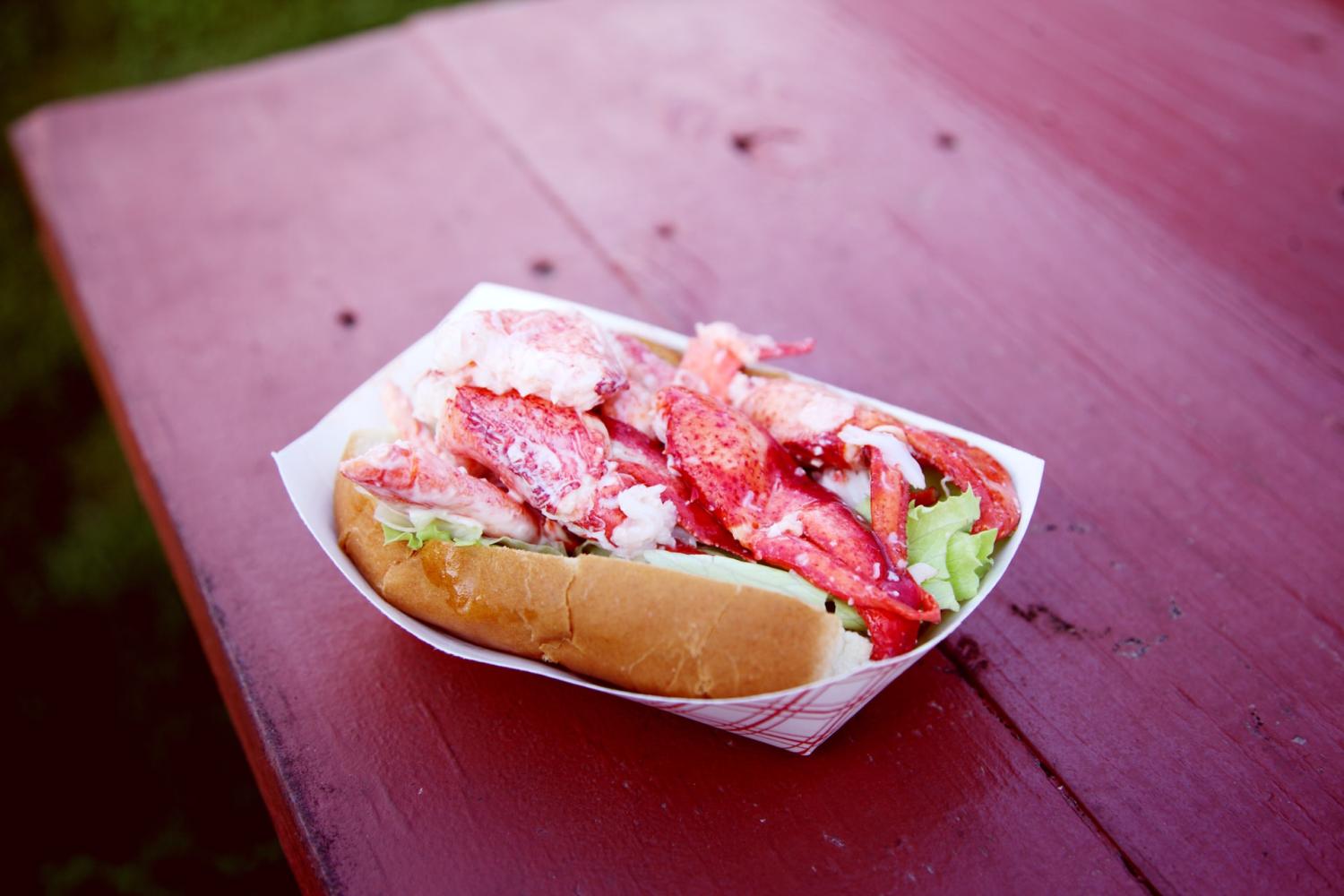
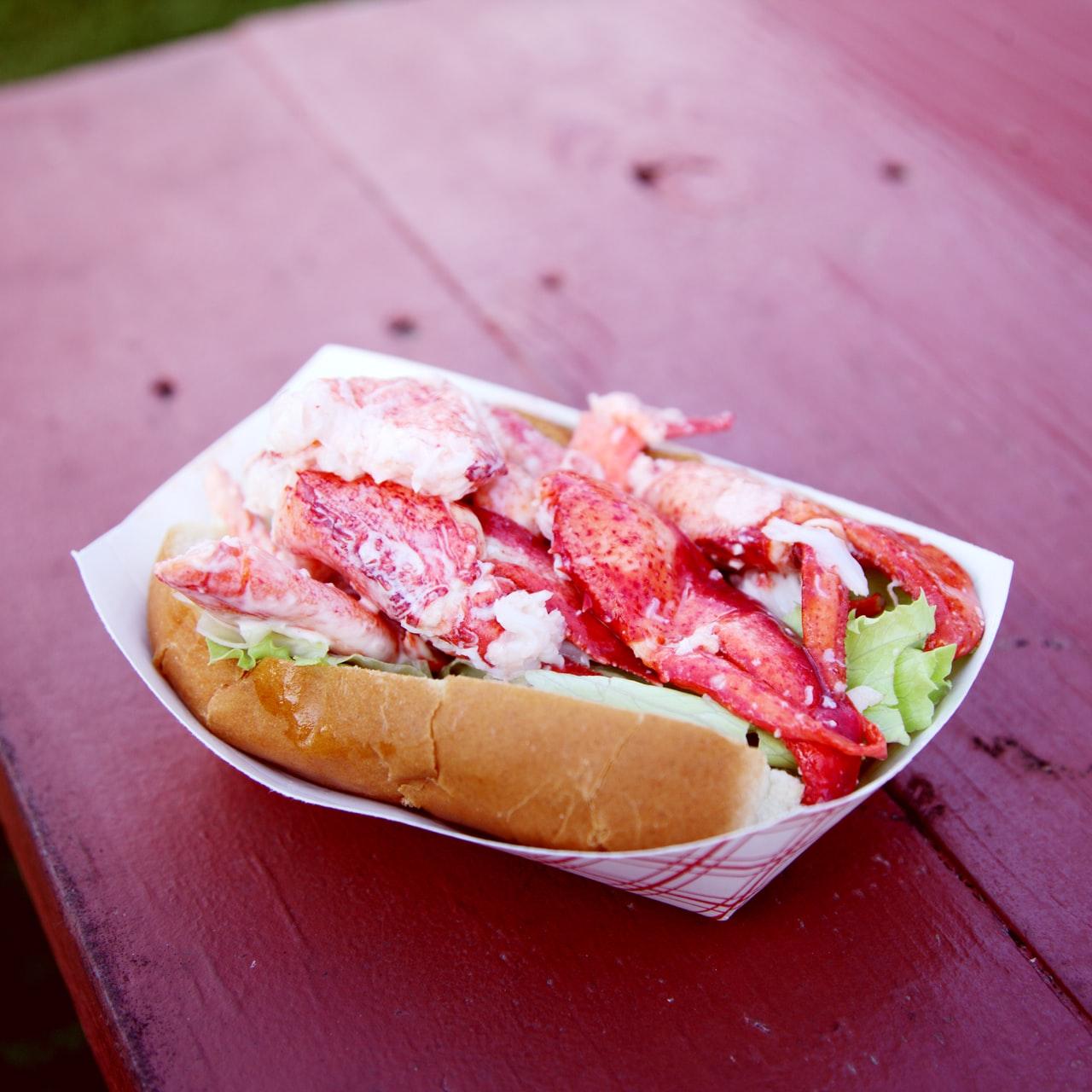
The world’s fisheries are in steep decline, and a bevy of solutions are necessary if the world is going to sustain both a growing population and the health of the world’s oceans. It’ll also be incumbent on consumers to rethink what they consider to be a seafood meal. Will people gravitate away from the “fresh catch of the day” and toward the “cell-cultured” selection on future seafood menus? Plus, when considering more expensive sources of seafood, could cell-based lobster become a thing? Well, at least one company out there is banking on the possibility that there’s a future for alternatives to lobster sourced from the sea.
This week, the food technology company Upside Foods acquired Cultured Decadence, a Wisconsin-based company that has been developing lab-grown seafood alternatives, including cell-based lobster.
In case you’ve been out of the loop, Upside Foods used to be known as Memphis Meats, which before its rebranding was known as the first lab-based meat producer on the planet, and a year later, rolled out the globe’s first cell-based meatball.
With concerns over whether the world’s food sector can sustain a global population that could approach 10 billion by mid-century, cell-based meat startups have attracted the eyes and dollars of investors; last year, the first lab-grown meat available for restaurant delivery made its launch in Singapore.
One argument driving innovation in this segment of the food technology sector is that while plant-based protein products keep improving in variety, taste and texture, there will always be consumers who want the “real thing,” as in meat. To that end, watch for more lab-based beef and chicken products to hit the market in the coming decade. But will a cell-based lobster roll resonate with consumers, or let’s be more specific: Will it appeal to people who fancy themselves as “diners” or “foodies?”
Upside Foods believes so, otherwise it wouldn’t have clawed up Cultured Decadence.
“Seafood has a rich and delicious culinary tradition that makes it a favorite across the globe, but climate change is destroying the habitats of crustaceans and posing a major threat to the conventional seafood supply amid skyrocketing demand,” Upside Foods announced in a public statement announcing the acquisition. “At the same time, crustaceans are the most fuel-intensive sector in seafood, accounting for 22 percent of the carbon emissions from fishing vessels.”
Add the fact that the U.K. government recently recognized crabs, lobsters and octopuses as sentient beings – that is, as animals that can feel pain – watch for more consumers to be more conscious about their food choices as they consider animal welfare while making their food choices.
Furthermore, more evidence suggests that seafood supplies worldwide are still at a tipping point, offering consumers another reason to reconsider their current shopping habits.
As for other alternatives to sourcing lobster, one institute in Corsica believes it has unlocked the key to breeding lobster and other crustaceans in captivity in an effort to resuscitate fisheries – but that approach will take some time to scale up.
No word yet on when a cell-based lobster roll will appear on menus anytime soon. For now, Upside Foods has confirmed that the team at the former Cultured Decadence will continue its work as planned, with the Wisconsin site serving as the company’s Midwestern hub.
Image credit: Sharon McCutcheon via Unsplash
A New App, Palau, Can Help Consumers Make Better Choices at the Supermarket
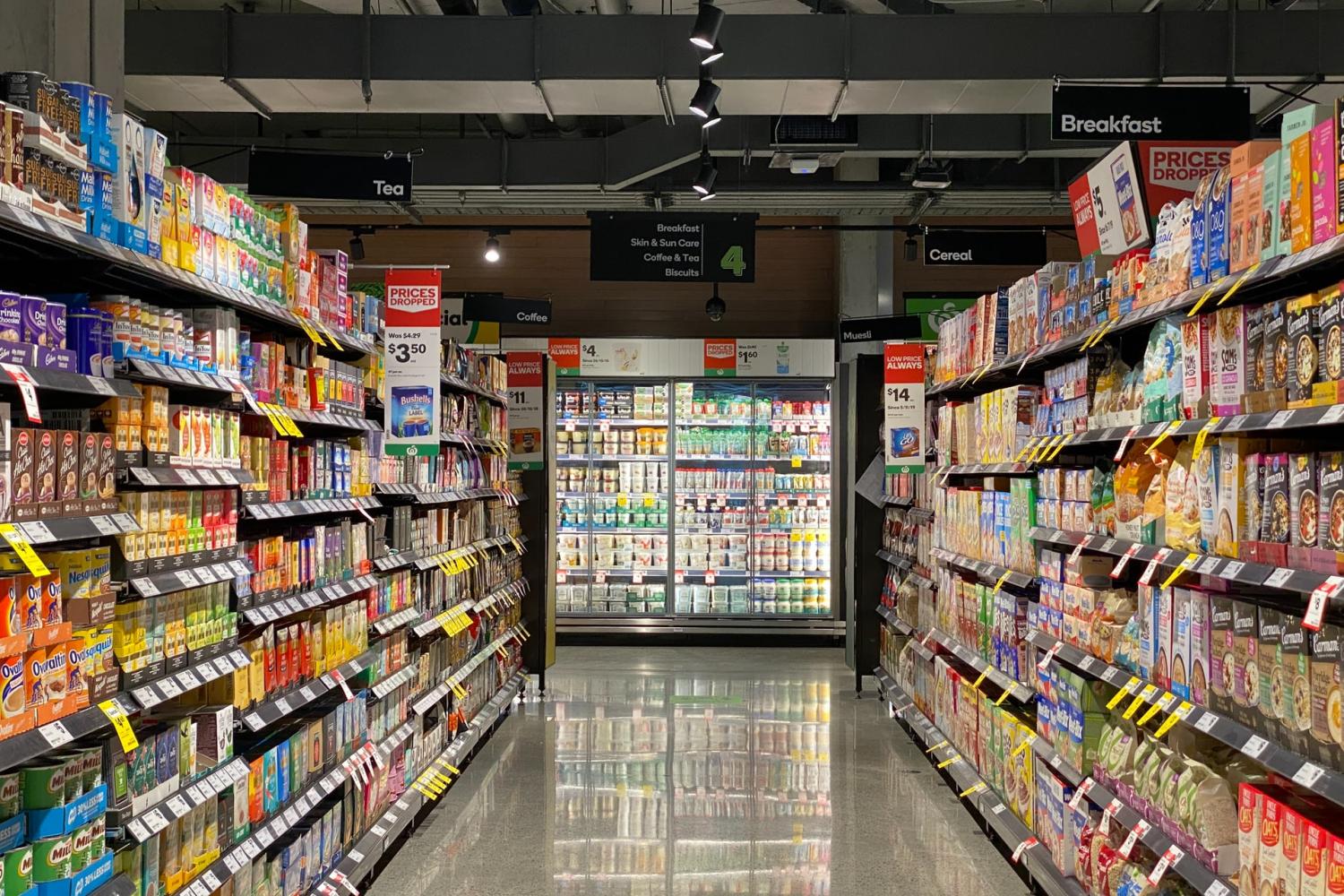
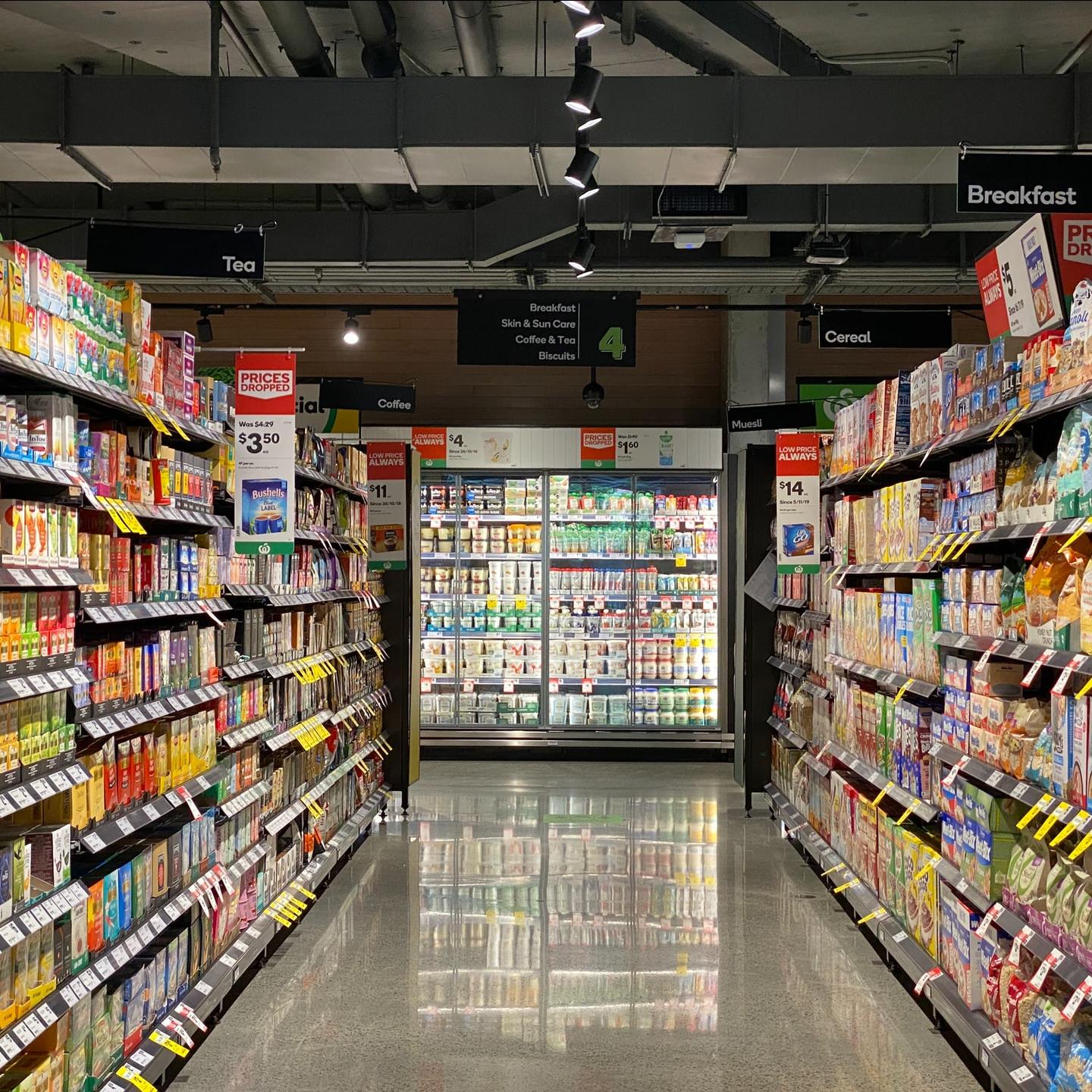
Released just this week, a new smartphone app, Palau, could help consumers better understand the environmental impacts that their food choices can have on the planet.
Why another supermarket app?
The western world has never before had such a diverse supply of food. From exotic fruits to sushi rolls, supermarkets can satisfy us with almost any food our heart’s desire. But increased carbon emissions, soil degradation and plastic pollution are amongst the results of an unsustainable supply chain. The founders of the start-up Palau is striving to rectify what has become a broken food system and make food production more responsible and better for the planet.
The Palau Project was founded by professional kite surfer turned businessman, Jerome Cloetens, and his cousin, Simon Hendrick. Cloetens’ motivation to start Palau developed from his love for nature and the outdoors. After many kite surfing escapades around the world, Jerome could no longer ignore the environmental issues that the planet faces.
“I would travel to many different countries and see the most beautiful beaches, but a lot of them would be covered in plastic. Even in my home in Tarifa [Spain] I was noticing that the Pilot whales were dying because of pollution. I got to know a lot about the whales and their habitat when I worked as a translator on a whale-watching boat,” Cloetens said in a recent interview. “This year, 30 percent of them passed away due to a disease most likely caused by the thousands of shipping containers that pass through the Gibraltar straits each day. If it keeps going on like this then in two, three years they’re done.”
How Palau works
The Palau app works by accumulating data from food products currently available for purchase. The app shows consumers the ecological impact and nutritional value of each product. It then rates the product and offers information about how the product was produced. Palau then offers a range of alternative food products that have a better ecological and nutritional score. Palau sources all of its information independently with no influence from brands or manufacturers.
The team behind the Palau app also seeks to generate more social interaction during the shopping experience. For example, if a person has managed to consistently shop with a very low ecological score, then Palau will suggest a package with similar products to what the consumer has been scanning, only that they will be plastic-free. Cloetens’ and Hendrick’s motivation behind this technology is that they hope the results will provide more incentive for people to shop consciously and with a heightened sense of their environmental impacts in mind.
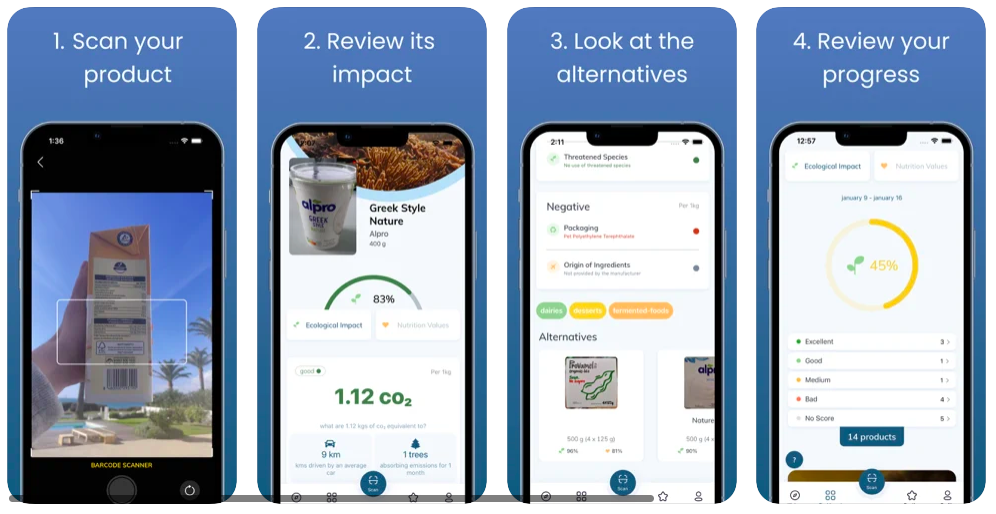
With more than 25 percent of all greenhouse gas emissions coming from food production and half the world's habitat being used for agriculture, apps like Palau are even more vital. By making food production transparent to consumers, the Palau project has the potential to force brands and manufacturers to use more sustainable methods of production. Palau also hopes to kill any greenwash that can surround food production and marketing.
“Palau offers companies no choice but to actually work on making their production lines and supply chains greener, rather than just saying they are doing so,” added Cloetens. “The Palau app will help consumers become more aware of the impact their food products have on the environment and therefore customers will be less inclined to buy the product if it is unsustainable.”
It’s clear consumers are becoming more conscious about their food choices
The idea for the Palau project was first influenced by the French nutritional app, Yuka. That app works by providing information on the nutritional value of each food product that the consumer desires to purchase. With over 28 million downloads, Yuka is one of the fastest growing nutritional apps on the market. Providing nutritional transparency to consumers has proved a big success, but can the same be said for ecological transparency? Do enough consumers actually care about food's ecological impact on the planet?
In 2016 a group of scientists carried out a study to find out how much consumers care about the carbon footprint of the products they buy. They achieved this by putting carbon footprint labels on the food products and examining whether the participants acknowledged them. The results showed that participants not only take carbon information into consideration when making product decisions, but they want in-depth information on the label. The researchers’ results show that manufacturers and brands should be preparing for an influx of consumers who want to see sustainability as a number one priority.
For now, the Palau app is available for download on the Apple store.
Image credit: Frank Chamaki via Unsplash